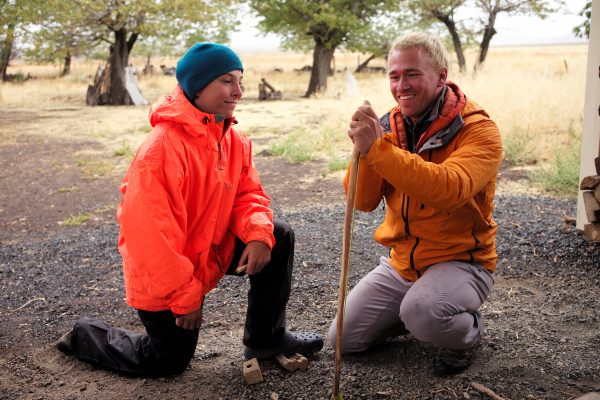Bluefire Wilderness Complaints: Understanding the Concerns and Finding Solutions?
The wilderness therapy industry has gained significant traction as more families seek alternative solutions for struggling teens. Among the many programs available, Bluefire Wilderness Therapy stands out for its unique approach and comprehensive care. However, like any service, it is not without its criticisms. This article delves into common complaints about Bluefire Wilderness Therapy, addressing the concerns and providing a balanced perspective on the issues raised.
Understanding Bluefire Wilderness Therapy
Before discussing the complaints, it’s essential to understand Bluefire Wilderness Therapy and its goals. In Idaho, Bluefire Wilderness Therapy offers a therapeutic adventure experience for adolescents and young adults. The program combines clinical therapy, wilderness expeditions, academic support, and family integration to help participants overcome various behavioural and emotional challenges.
Common Complaints About Bluefire Wilderness Therapy
- High Cost of the Program
One of the most frequent complaints about Bluefire Wilderness Therapy is the high cost. Wilderness therapy programs, in general, are expensive, and Bluefire is no exception. The program’s comprehensive nature, which includes clinical therapy, outdoor activities, and academic services, contributes to the high cost. While the investment can be substantial, many families find the benefits outweigh the financial burden. However, the cost can be prohibitive for those who can afford such a program.
- Emotional Strain on Participants
Another common complaint is the emotional strain placed on participants. Wilderness therapy can be intense, pushing adolescents and young adults out of their comfort zones. The isolation from familiar environments and the rigorous activities can be overwhelming for some. While the program aims to build resilience and promote personal growth, the initial adjustment period can be challenging. Critics argue that the emotional toll on participants can sometimes outweigh the benefits, particularly for those with severe emotional or psychological issues.
- Lack of Communication
Families often express concerns about the lack of communication between the program and parents. Parents naturally want to stay informed about their child’s progress when sending a child to a wilderness therapy program. Some families have reported feeling left in the dark, with limited updates and communication from the staff. This lack of transparency can exacerbate anxiety and lead to distrust in the program’s effectiveness.
- Standardization of Treatment
Another point of contention is the perceived standardization of treatment. Critics argue that wilderness therapy programs like Bluefire may adopt a one-size-fits-all approach, failing to account for the unique needs of each participant. While the program claims to tailor its approach to individual needs, some families feel that the treatment plans must be more flexible and offer the necessary flexibility to address specific issues effectively.
- Physical Demands of the Program
The physical demands of wilderness therapy can also be a concern. Participants engage in various outdoor activities, including hiking, camping, and survival skills training. While these activities are designed to build resilience and self-reliance, they can be physically taxing. Some complaints centre around the intensity of these activities, particularly for participants who may not be in peak physical condition or have underlying health issues.
Addressing the Complaints: A Balanced Perspective
While the complaints about Bluefire Wilderness Therapy are valid and deserve attention, it is crucial to consider the context and potential benefits of the program.
- Addressing Cost Concerns
Bluefire Wilderness Therapy recognizes the financial burden on families and offers various payment plans and financial aid options. Additionally, some insurance plans may cover part of the treatment costs. Families are encouraged to explore these options and discuss them with the program’s admissions team to find a feasible solution.
- Mitigating Emotional Strain
The emotional strain experienced by participants is often a part of the therapeutic process. Bluefire Wilderness Therapy employs licensed therapists and experienced staff to provide support and guidance throughout the program. The initial discomfort is often a precursor to significant personal growth and development. Families can help mitigate this strain by maintaining open communication with their children and offering emotional support.
- Improving Communication
To address communication concerns, Bluefire has implemented more robust communication protocols. Regular updates, progress reports, and scheduled calls with therapists are now part of the program. This increased transparency helps families stay informed and involved in their child’s therapeutic journey.
- Customizing Treatment Plans
Bluefire emphasizes its commitment to individualized care. Each participant undergoes a thorough assessment to develop a personalized treatment plan upon enrollment. While the core components of wilderness therapy remain consistent, these plans are tailored to address specific needs and goals. Families are encouraged to communicate openly with the staff to meet their child’s unique needs.
- Balancing Physical Demands
The physical activities in wilderness therapy are designed to be challenging but achievable. Bluefire staff are trained to assess each participant’s physical capabilities and adjust activities accordingly. Safety is a top priority, and any participant with health concerns receives appropriate accommodations. The physical challenges build confidence and a sense of accomplishment, contributing to therapeutic goals.
Positive Outcomes and Success Stories
Despite the complaints, many families have reported positive outcomes from their experience with Bluefire Wilderness Therapy. Success stories often highlight significant behavioural improvements, emotional stability, and family relationships. Participants frequently leave the program with renewed purpose, better coping skills, and increased self-esteem.
Conclusion
Like any therapeutic program, Bluefire Wilderness Therapy has its share of criticisms. The high cost, emotional strain, communication issues, standardized treatment, and physical demands are common complaints. However, families can make an informed decision by understanding these concerns and considering the program’s context and potential benefits. Bluefire Wilderness Therapy strives to address these issues and continuously improve its services to provide practical, individualized care for participants. For many families, the program’s transformative impact makes the challenges worthwhile, leading to lasting positive changes in their loved ones’ lives.
In conclusion, while it’s essential to acknowledge and address the complaints about Bluefire Wilderness Therapy, it’s equally important to recognize the program’s potential for positive transformation. Families considering this therapeutic approach should weigh the pros and cons, communicate openly with program staff, and seek testimonials and reviews to make the best decision.
Abraham Quiros Villalba: A Comprehensive Overview of His Contributions and Achievements?







